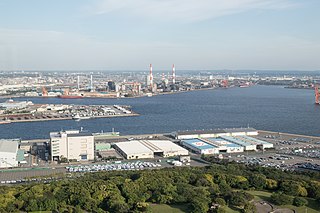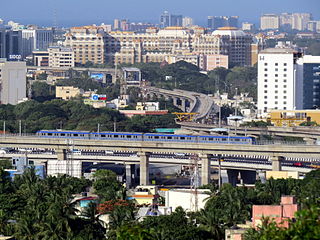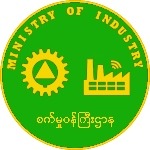Foreign trade played an important role in the national economy of Communist Czechoslovakia as opposed to the economic system of the Soviet Union.

Current good manufacturing practices (cGMP) are those conforming to the guidelines recommended by relevant agencies. Those agencies control the authorization and licensing of the manufacture and sale of food and beverages, cosmetics, pharmaceutical products, dietary supplements, and medical devices. These guidelines provide minimum requirements that a manufacturer must meet to assure that their products are consistently high in quality, from batch to batch, for their intended use. The rules that govern each industry may differ significantly; however, the main purpose of GMP is always to prevent harm from occurring to the end user. Additional tenets include ensuring the end product is free from contamination, that it is consistent in its manufacture, that its manufacture has been well documented, that personnel are well trained, and that the product has been checked for quality more than just at the end phase. GMP is typically ensured through the effective use of a quality management system (QMS).

A biorefinery is a refinery that converts biomass to energy and other beneficial byproducts. The International Energy Agency Bioenergy Task 42 defined biorefining as "the sustainable processing of biomass into a spectrum of bio-based products and bioenergy ". As refineries, biorefineries can provide multiple chemicals by fractioning an initial raw material (biomass) into multiple intermediates that can be further converted into value-added products. Each refining phase is also referred to as a "cascading phase". The use of biomass as feedstock can provide a benefit by reducing the impacts on the environment, as lower pollutants emissions and reduction in the emissions of hazard products. In addition, biorefineries are intended to achieve the following goals:
- Supply the current fuels and chemical building blocks
- Supply new building blocks for the production of novel materials with disruptive characteristics
- Creation of new jobs, including rural areas
- Valorization of waste
- Achieve the ultimate goal of reducing GHG emissions

Japan's major export industries include automobiles, consumer electronics, computers, semiconductors, copper, and iron and steel. Additional key industries in Japan's economy are petrochemicals, pharmaceuticals, bioindustry, shipbuilding, aerospace, textiles, and processed foods.
The Industry Classification Benchmark (ICB) is an industry classification taxonomy launched by Dow Jones and FTSE in 2005 and now used by FTSE International and STOXX. It is used to segregate markets into sectors within the macroeconomy. The ICB uses a system of 11 industries, partitioned into 20 supersectors, which are further divided into 45 sectors, which then contain 173 subsectors.
The Center for Biologics Evaluation and Research (CBER) is one of six main centers for the U.S. Food and Drug Administration (FDA), which is a part of the U.S. Department of Health and Human Services. The current Director of CBER is Peter Marks, M.D., PhD. CBER is responsible for assuring the safety, purity, potency, and effectiveness of biologics and related products. Not all biologics are regulated by CBER. Monoclonal antibodies and other therapeutic proteins are regulated by the FDA Center for Drug Evaluation and Research (CDER).
Title 21 is the portion of the Code of Federal Regulations that governs food and drugs within the United States for the Food and Drug Administration (FDA), the Drug Enforcement Administration (DEA), and the Office of National Drug Control Policy (ONDCP).
Australian and New Zealand Standard Industrial Classification (ANZSIC) was jointly developed by the Australian Bureau of Statistics and Statistics New Zealand in order to make it easier to compare industry statistics between the two countries and with the rest of the world.

For health issues in Iran see Health in Iran.

Tamil Nadu has the second largest state economy in India. The state also hosts the highest number of factories in the country. The state is 48.40% urbanised, accounting for around 9.26% of the urban population in the country, while the state as a whole accounted for 5.96% of India's total population in the 2011 census. Services contributes to 54% to the gross domestic product of the state, followed by manufacturing at 33% and agriculture at 13%.
Expenditures by Canadian corporations on research and development accounted for about 50% of all spending on scientific research and development in Canada in 2007.
This article outlines the history of Canadian technological invention. Technologies chosen for treatment here include, in rough order, transportation, communication, energy, materials, industry, public works, public services, domestic/consumer and defence technologies.
In Pakistan, cottage or household industries hold an important position in rural set-up. Most villages are self-sufficient in the basic necessities of life. They have their own carpenters, cobblers, potters, craftsmen and cotton weavers. Many families depend on cottage industries for income.
The United Kingdom, where the Industrial Revolution began in the late 18th century, has a long history of manufacturing, which contributed to Britain's early economic growth. During the second half of the 20th century, there was a steady decline in the importance of manufacturing and the economy of the United Kingdom shifted toward services. Manufacturing, however, remains important for overseas trade and accounted for 44% of goods exports in 2014. In June 2010, manufacturing in the United Kingdom accounted for 8.2% of the workforce and 12% of the country's national output. The East Midlands and West Midlands were the regions with the highest proportion of employees in manufacturing. London had the lowest at 2.8%.

According to a report by The Economist, Iran has been ranked 39th for producing $23 billion of industrial products in 2008. From 2008 to 2009 Iran has leaped to 28th place from 69th place in annual industrial production growth rate.
The pharmaceutical industry in Pakistan is strictly regulated by the Drug Regulatory Authority of Pakistan, which oversees drug approvals and pricing.
Specialty chemicals are particular chemical products which provide a wide variety of effects on which many other industry sectors rely. Some of the categories of speciality chemicals are adhesives, agrichemicals, cleaning materials, colors, cosmetic additives, construction chemicals, elastomers, flavors, food additives, fragrances, industrial gases, lubricants, paints, polymers, surfactants, and textile auxiliaries. Other industrial sectors such as automotive, aerospace, food, cosmetics, agriculture, manufacturing, and textiles are highly dependent on such products.

The Ministry of Industry is a ministry in the Government of Myanmar that produces consumer products such as pharmaceuticals and foodstuffs, textiles, ceramics, paper and chemical products, home utilities and construction materials, assorted types of vehicles, earth-moving equipment, diesel engines, automotive parts, turbines and generators, CNC machines, transformers, agricultural machines, rubber and tires, etc.
Customs Regulations in Thailand is a combination of requirements affecting on import and export of production across the border of Thailand. Thailand has a system of “green” and “red corridor”. “Green corridor” can be used by person transferring goods which are not subject to a customs declaration. “Red corridor” is provided for persons transferring goods which are subject to a customs declaration. For instance, goods that should be paid by customs taxes, forbidden goods or goods that required a special authorization.






